Script for the Engines CD, Fall 2003
by John H. Lienhard
Mechanical Engineering Department
University of Houston
Houston, TX 77204-4006
jhl [at] uh.edu (jhl[at]uh[dot]edu)
Audio Production and Sound Mixing: Capella V. Tucker
Music: Andrew Lienhard, Daydream4 Productions
CD Production: Jimmy Do
Source material is given at the end of this text.
Track 1: Introduction (3:13): We live together on this flat Earth, you and I. The biosphere from the bottom of the sea to the outer atmosphere is as thin as a coat of paint upon the globe in your living room. If the Himalayas were etched in true size upon that globe, your finger might sense a faint roughness as you drew it across the glassy smooth Tibetan Plateau, down into India's Madhya Pradesh. But no more than the slight tooth on very fine emery paper. Laugh at the idea of a flat earth if you will, but there is vastly more east, west, north, and south in our habitable world than there is up or down.
And we live only within an instant of time -- the cosmic blink of an eye. If we point our strongest telescopes at the furthest fringes of our universe, we can now see what it looked like a quarter-billion human lifetimes ago. And to further confuse our senses, we see that distant past, right now (albeit some fifteen billion light years away).
During the eyeblink of the last century, time and space have fused, bent, and distorted under our very eyes. They have developed a very strange relativistic elasticity. As we struggle to orient our lives within time and space, time and space have begun to writhe about us like discontented serpents.
Perhaps the single grandest human endeavor, in our brief two-and-a-half million year history as ambitious tool makers, has been the struggle to find our way within this at-least-four-dimensional framework. We have learned so much about our celestial skeleton, but we have also opened up a yawning pit of mystery. Mystery now seems to race outward from us, far faster than we can chase it.
But chase it we have, chase it we will, and chase it we must. And, perhaps understanding will seem closer to our children than it does to us. But no matter, for mystery is the great driving engine of our species. And so let us ask just how the pursuit of the mystery of time and space has made us, in the words of the Eighth Psalm, "a little lower than the angels." For all our venality, this particular gnawing wish to know -- to understand -- is responsible for so much that is good and worthwhile in humankind.
Before we begin, I should mention that the last track on this CD is only data. It won't play in your audio player. But when you put the CD in your computer, you'll be led to the full text, along with images, links, and sources. We recommend you do that. But right now, let us join our early forebears in their struggle to understand the starry firmament -- the firmament that has teased the human mind since we first turned our eyes to look upward.
 Track 2: Whom mortals call the moon (5:31): Night falls and we find ourselves joined by a host of companions -- all the starry host. And, reigning there as their queen is the moon. From time immemorial, the moon has lain upon our minds as a mystic force and presence. Not as dramatic as the sun, perhaps; but she inhabits the night. Thus, it is she who touches our dreams. Small wonder that Shelley wrote about "That orbed maiden, with white fire laden, Whom mortals call the Moon."
Track 2: Whom mortals call the moon (5:31): Night falls and we find ourselves joined by a host of companions -- all the starry host. And, reigning there as their queen is the moon. From time immemorial, the moon has lain upon our minds as a mystic force and presence. Not as dramatic as the sun, perhaps; but she inhabits the night. Thus, it is she who touches our dreams. Small wonder that Shelley wrote about "That orbed maiden, with white fire laden, Whom mortals call the Moon."
In his wonderful book Calendar, David Duncan includes a chapter titled Luna: Temptress of Time. In it, he tells how the moon's period of 29-1/2 days has repeatedly misled calendar-makers. Twelve lunar cycles make a year of 354 days. That's eleven days less than it takes for us to circle the sun. Yet, what more compelling measure of the passing days do we have? Our modern words measure and meter are both kin to the old Latin word menses, which means month. Thus, space and time become mixed together etymologically.
Duncan begins by looking at a ten-thousand-year-old bone. A row of vertical incisions marches across it. The marks change slightly every seven strokes. This appears to be a rudimentary lunar calendar carved by an ancient dweller beside the Baltic Sea. Every seven days the phase of the moon changes. That's probably what's being mapped out here on this old bone fragment. Other carvings, much older, offer direct sketches of the moon's phases.
As the moon rode the night sky, shaping our dreams, scripting our myths, and teasing our imaginations, she certainly was a temptress. The twelve-month lunar year was close to right, yet maddeningly off. The Babylonians would use a block of thirteen-month years and then get back on the solar cycle with another block of twelve-month years. The old Jewish calendar also used lunar months, but that calendar was corrected by inserting an extra month every three years. And then it needed yet another month, every so often. The Greeks built their year out of twelve lunar months and fixed it by adding ninety days every eight years.
 Only the practical Egyptians managed to avoid being led by the moon. They worshiped the Sun god, Ra, and gave preference to the sun. They made the year from twelve thirty-day months. Then they added five days as birthdays of Osiris, Isis, Horus, Nephthys, and Set.
Only the practical Egyptians managed to avoid being led by the moon. They worshiped the Sun god, Ra, and gave preference to the sun. They made the year from twelve thirty-day months. Then they added five days as birthdays of Osiris, Isis, Horus, Nephthys, and Set.
Duncan thinks that Egypt's fixation on the sun ran from its kinship with the annual cycle of the Nile River. And, as luck would have it, the so-called Dog Star, Sirus, aligns with the rising sun once each year in that region. The Egyptians had a pure benchmark to identify the new solar year. Without such clear markers, other calendars stayed wedded to the moon.
The Western world took up the solar calendar as a direct result of Julius Caesar's affair with Cleopatra. His infatuation with her, and with Egypt itself, led him to order a solar calendar for Rome in 45 BC. At first, that Julian calendar used alternating 30- and 31-day months, except for a 29-day February. And it added an extra day every fourth year. Roman politicians eventually took a second day from February and gave it to August. That was to honor Caesar Augustus with a 31-day month. The Julian calendar was still eleven minutes off, and that required another adjustment much later. But our solar calendar is essentially the same one that Caesar concocted as he held Cleopatra under the Egyptian moon, two millennia ago.
We return to the moon later in this CD, for the moon promised to be what other objects in the night sky did not. The stars seemed to be no more than a fixed spherical panel, cold and distant, wheeling about Earth in the night sky. The planets were more puzzling. They were as remote as the stars, yet they shifted with respect to one another -- housing themselves among this or that group of stars as the year wore on. But the moon was an entirely different matter. The moon was accessible -- not threatening (as the sun often became by day) but a close companion, gently lighting our path by night. The moon became everything that was feminine in our many iconographies.
To all outward appearance, the moon and her daylight alter ego, the sun, were spheres rotating about Earth. Were we also a sphere in that obviously-three-dimensional universe? The notion of a flat Earth perished as soon as we began describing things logically, mathematically, and geometrically. And, if we were a sphere as well, that led us to wonder just how large a sphere this is, which we call our home.
 Track 3: Measuring Earth (3:47): The Discoverers, Daniel Boorstin's monumental book on human curiosity, tells about the complex task of describing our planet. His chapter "The Geography of the Imagination" helps us understand how Earth revealed itself to us.
Track 3: Measuring Earth (3:47): The Discoverers, Daniel Boorstin's monumental book on human curiosity, tells about the complex task of describing our planet. His chapter "The Geography of the Imagination" helps us understand how Earth revealed itself to us.
Two complex ideas, the wheel and the globe, are grooved into your mind and mine, from infancy. It was only 5500 years ago that we finally saw how a rotating wheel could produce forward motion. Recognizing that Earth's apparently flat surface bends into the shape of a sphere was even more recent. Some cultures imagined Earth as a disc, some, box-shaped. The early Egyptians said it was an egg, guarded by the moon at night. About 2500 years ago, the Greeks finally decided that Earth was a sphere. Plato argued that, since the sphere is a perfect shape, Earth must be spherical. Aristotle used observation. He pointed to the circular shadow that Earth casts upon the moon during an eclipse.
The poet John Donne looked back on all that difficulty, a century after Magellan finally circumnavigated the earth. And he wrote, "At the round earths imagined corners, blow Your trumpets, Angells."
Although the Greeks knew Earth was a sphere, they had no way of knowing how large that globe might be. The most daring travelers all saw Earth reaching farther still beyond the fringe of their journeys. Then, in 200 BC, travelers told the head of the Alexandria Library, Eratosthenes, about a well near present-day Aswan.
Just once a year, at noon during the summer solstice, the bottom of the well was lit by the sun. At that moment, the sun was straight overhead. Eratosthenes realized he could measure the shadow cast by a tower in Alexandria while no shadow was being cast in Aswan. Then, knowing the distance to Aswan, it'd be simple to calculate Earth's radius. (You geometry students -- you should be able to do that one.)
There was no accurate timekeeping back then. And so, for Eratosthenes to make his observation, noon had to occur at the same time in both cities. That would happen if Aswan lay due south of Alexandria. Actually, it lies south by southeast, but the error was not great. His calculated size of Earth was high by only fifteen percent.
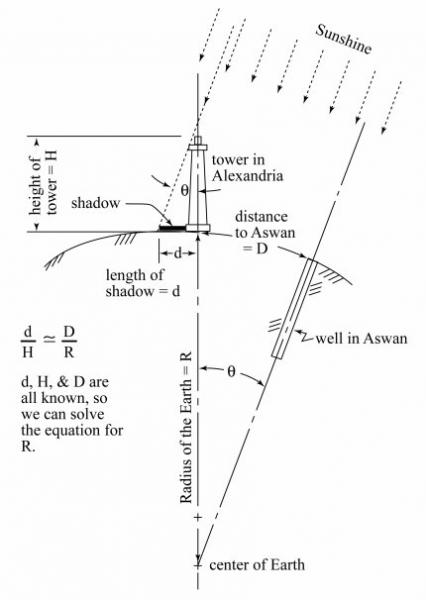
Three centuries later, the astronomer Ptolemy created many of the methods of modern geography. It was he who abandoned the idea that we're girdled by a great unsailable ocean. Ptolemy believed that other lands lay out in the terra incognita. He built upon Eratosthenes; but he also criticized him. When Ptolemy made his own estimate of size, he used different means, and he came out twenty-eight percent below the correct value.
Ptolemy's thinking suited Columbus, for it shrank Earth to fit his ships. Columbus was plain dumb lucky that the West Indies intervened. And we need to remember what a mental leap the ancients had to make. The imagined four corners of the earth thwarted our understanding until a scant 2500 years ago. Only then did we finally fold our minds around the idea of a round earth. And it was only four hundred years ago that we actually managed the mind-numbing trick of traveling to the East by sailing west.
Track 4: Galileo and a New Moon (4:12): The moon rises once more as we thread through the mysteries of time and space. For, just as the Moon led us on the road to metering time, she also led us to see beyond that thin, thin, layer of biosphere that lies upon Earth's surface.
Let us go back four centuries to a key moment in which we took our first baby-step into space. In 1609, Galileo heard about the new telescopes being built in the Netherlands and he quickly built one of his own. His first was a three-power telescope. Later that year, he presented an eight-power telescope to the court. Then, on November 30, Galileo turned one of those telescopes upon the moon.
He was not the first to look at the moon through a telescope. Earlier that same year, the English scientist Thomas Harriot had done so. Harriot sketched the terminator line between light and dark on the moon's face. The terminator was, to Harriot's surprise, jagged! He wondered, how that could be. Everyone knew the moon was a perfect crystalline sphere. Down through the millennia, the stars and planets had been a true wink of heaven. Out there lay inaccessible perfection. We called them The Heavens just because we had no hope of going there in this mortal life. In fact, we believed that Heaven actually lay in the regions beyond the last crystalline sphere -- the one that carried the fixed stars, all at the same distance from Earth. Harriot's jagged terminator line had to be the reflection of imperfect Earth upon the surface of the perfect moon.
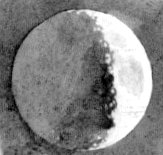 But Galileo had two advantages over Harriot. For one thing, it was he who'd already put in motion a revolution that would overturn two thousand years of Aristotelian thinking. Galileo was not committed to a perfect moon. His second advantage was that he was no mean artist. He made a set of sepia drawings of the moon in its changing phases -- beautiful images with a wonderful luminescent glow. They left no doubt about the pockmarked surface -- the mountains and valleys of the moon.
But Galileo had two advantages over Harriot. For one thing, it was he who'd already put in motion a revolution that would overturn two thousand years of Aristotelian thinking. Galileo was not committed to a perfect moon. His second advantage was that he was no mean artist. He made a set of sepia drawings of the moon in its changing phases -- beautiful images with a wonderful luminescent glow. They left no doubt about the pockmarked surface -- the mountains and valleys of the moon.
When other people saw those drawings they promptly saw what they had not been able to see before. Like an optical illusion, the moon changed in a blink from smooth to rough. Galileo went on to calculate the height of lunar mountains from the shadows they cast. He also observed spots on the supposedly perfect sun. Others had seen sunspots, but the Aristotelian world had ignored them. Now our perception of the sun turned over just as abruptly as our perception of the moon had. Only three years after Galileo made his lunar sketches, the Virgin was painted upon the ceiling of a new Roman Basilica, standing on a cratered moon.
In no time, poets like Milton and Dryden were writing about that newly-craggy lunar surface. And John Donne used imagery of cratered planets and sunspots in a poem about the crucifixion:
What a death were it then to see God dye;
It made his own Lieutenant Nature shrinke,
It made his footstool crack, and the Sunne winke.
Could I behold those hands which span the Poles,
And tune all Spheares at once, pierc'd with those holes?
So the church simply ingested Galileo's first assaults on the perfect Aristotelian universe. His troubles with the Vatican lay ahead of him and those troubles would revolve about the Sun-centered solar system. That, too, had much to do with making us see the heavens as a real place, where humans might actually go. But it was Luna, (whom mortals call the Moon) who truly summons us to make a habitation of space. And we heard that siren call immediately after Galileo had shown us her craggy imperfections.
Track 5: A Habitation and a Name (6:20): Nine years before Galileo described the moon, Shakespeare seems to've know what was coming. In Act 5 of A Midsummer Night's Dream, his hero Theseus tells us, with remarkable precision, what was about to happen. He says,
The poet's eye, in a fine frenzy rolling,
Doth glance from heaven to earth, from earth to heaven;
And as imagination bodies forth
The forms of things unknown, the poet's pen
Turns them to shapes and gives to airy nothing
A local habitation and a name.
The poet did, indeed, now glance from Earth to heaven, and imagination did body forth the forms of things unknown. The stars and planets, which had been the stuff of heaven before 1609, became real places. A scant five years after Galileo's discovery, with the shock waves still reverberating, noted British scientist John Wilkins published a book with the remarkable title, The Discovery of a World in the Moone: or, A Discourse Tending To Prove that 'tis probable there may be another habitable World in that Planet.
In this study of the newly secularized moon, Wilkins argued thirteen propositions -- some accurate, some not. The moon, he said, is solid and opaque. Like earth, it's made of base and corruptible matter. It has no light of its own; it only reflects the sun. It has mountains and valleys. And it suffers meteor impacts. Wilkins argued that Earth orbits the sun just as the moon orbits Earth. This was long before Newton, and yet Wilkins accurately described how orbiting bodies stayed aloft.
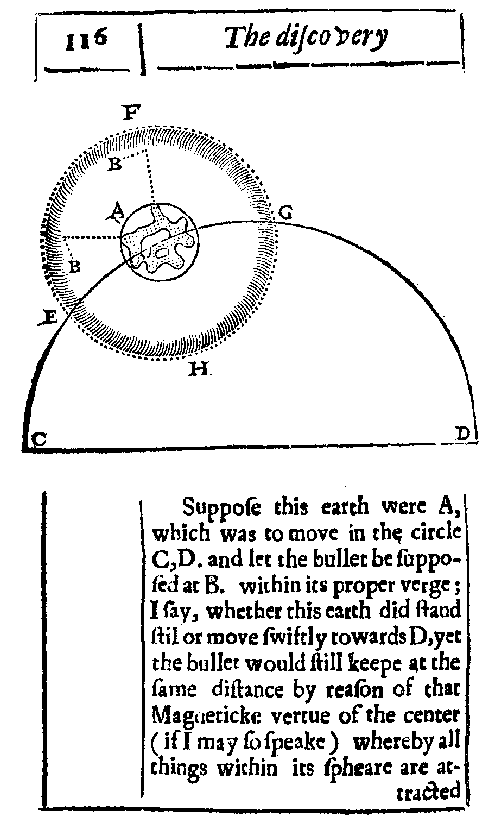
Wilkins' explanation of how an orbiting body stays aloft.
Note his invention of the phrase Magnetic virtue to describe gravity.
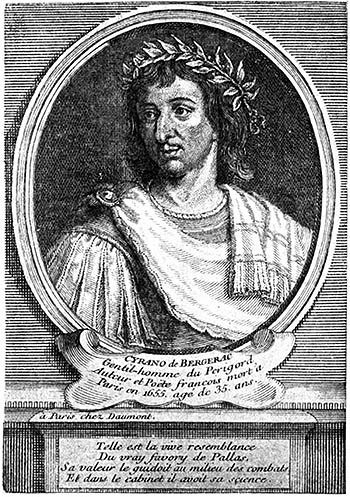 Wilkins said that the moon has an Atmo-Sphere (which he writes as two words, by the way). How did he know? It was because that's what creates the fuzzy edge of the shadow cast on Earth during a solar eclipse. He blew that one. He didn't realize that he was looking at the same fuzzy penumbra that we see along the edges of the shadow cast by a tree. And when he spoke of life on the moon, Wilkins (who had recently taken Holy Orders) allowed his arguments to shift from physical to theological. He worried about how Adam might've sired its inhabitants, and whence their salvation might come.
Wilkins said that the moon has an Atmo-Sphere (which he writes as two words, by the way). How did he know? It was because that's what creates the fuzzy edge of the shadow cast on Earth during a solar eclipse. He blew that one. He didn't realize that he was looking at the same fuzzy penumbra that we see along the edges of the shadow cast by a tree. And when he spoke of life on the moon, Wilkins (who had recently taken Holy Orders) allowed his arguments to shift from physical to theological. He worried about how Adam might've sired its inhabitants, and whence their salvation might come.
Wilkins' book was popular, and some remarkable people picked up on his ideas. First, a translation appeared in France, and Cyrano de Bergerac read it. That may need some explaining: Ever since Rostand wrote his play about Cyrano a century ago, we've laughed at his nose speech and wept as he dies reciting his love for Roxanne in another man's name. But Cyrano was a real seventeenth-century writer, born ten years after Galileo viewed the moon.
He wasn't from Bergerac, but Paris. His nose was, indeed, substantial, and he did serve as a soldier. He was even wounded twice. Still, the swordsman, wit, and tragic figure of Rostand's play was not the historic Cyrano. Rather, he was built upon the revolutionary spirit of the real Cyrano.
One of Cyrano's close friends had been the French intellectual heritor of Galileo, Pierre Gassendi. Gassendi was the early theorist who helped us move away from the old Aristotelian essences of Earth, Air, Fire, and Water, toward an atomic theory of matter. He and Cyrano had a mutual affinity for intellectual revolution.
After Cyrano left the army, he used his pen to deal with this world being transformed. He wrote until his death at the age of only 35. Writers around him hated his daring theatrical stuff. They called it wild and far-fetched. For, if Galileo and Gassendi had built a new science of bold extremes, Cyrano would now build baroque prose to match it. Toward the end of his short life, Cyrano turned the telescope of his imagination on Galileo's secular moon. He joined a very early handful of people who were using science fiction to deal with the new cosmos.
Kepler had already used science fiction to tell about his sun-centered universe. That's how he kept out of trouble with the Church. But Cyrano wrote much flashier stuff for a larger audience. The hero of his book, Voyage to the Moon, made several attempts to get there. He surrounded his body with glasses of morning dew. When the sun drew the water up, it drew him with it. A group of soldiers tied their ordnance to his flying machine and it rose into the sky like a modern rocket.
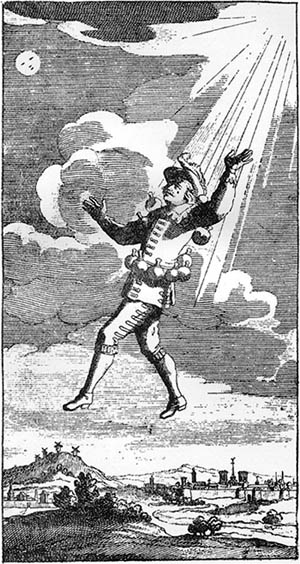
So, seventeenth-century thinkers used science fiction to come to grips with the newly-discovered cosmos. You couldn't very well fantasize about going to a moon of pure empyrean essence. But a flawed and tangible moon -- well, that had the capacity for touching our dreams. The real Cyrano did not dream of some mythic Roxanne. He dreamt instead of a world being changed from the stuff of dreams into solid matter. His last novel, published after his death, was a wildly fanciful science fiction tale about actually visiting that Earthlike moon.
The other inheritor of Wilkins' ideas was Dutch/English scientist Christiaan Huygens. He was fifteen years younger than Wilkins, and undoubtedly knew him. In 1698, Huygens wrote his own book promoting the likelihood of intelligent life on other planets.
Of course all these people got things wrong, but Wilkins' eleventh proposition was prophetic. He wrote of alien beings upon the moon and said, "... as their world is our Moone, So our world is their Moone." Those words immediately remind us of that mystical NASA picture of Earth, seeming to rise like a great companion planet, over the rim of the moon. And there, watching it happen, photographing it, were living intelligent beings, after all. The moon had truly become a local habitation, and a name.

Track 6: The Speed of Light (5:36): The new telescopes were opening up the cosmos very rapidly by the time Galileo died in 1642. Seventeenth-century natural philosophers did not fully realize it just then, but they were about to resolve another ancient question, "Is light transmitted instantaneously or does it have finite speed?" Galileo believed that light took time to travel. So did Moslem scientists before him, as well as Roger Bacon who worked on basic optics in the thirteenth century.
But Kepler, Descartes, and many other important thinkers, believed that light was transmitted instantaneously. (Most of us, by the way, instinctively make the same presumption about the speed of gravity. Ask yourself this one: If the sun were to somehow magically disappear, would we instantly spin off into space, or would we have to wait for several minutes before the lingering gravitational pull of the sun released us?)
So, did we have to wait for modern physics to get answers? Well, maybe for the gravity part. But we knew the speed of light much sooner. In 1644, one Ole Roemer was born in Jutland, Denmark. Roemer took up the study of astronomy and, during the fall of 1675, he was to be found working in Paris with French astronomer Jean Picard. (By the way, in addition to being the namesake of Star Trek's Jean Luc Picard, the astronomer Picard was also first to observe neon lighting).
Roemer was studying the movement of Jupiter's nearest moon, Io. He tracked it as it orbited in and out of Jupiter's shadow. It entered the shadow, then reemerged 42 hours, 28 minutes, and 35 seconds later. Naturally, he expected that to repeat -- over and over. But something was wrong. Each transit was taking just a few seconds longer than the one before it. All that winter, Io kept appearing further and further behind schedule. By spring, it was emerging from Jupiter's shadow a full fifteen minutes later than it should have. That was crazy. Was the Solar System slowing down?
Then Roemer realized: Earth was hundreds of millions of miles further from Jupiter in the spring than it was in the fall. Light had to travel all that extra distance. It obviously needed extra time to do so. Roemer put pencil to paper and concluded that light had to move 192,500 miles per second to go the extra distance in fifteen minutes. Just to be sure, he calculated that we'd get the fifteen minutes back as Earth returned toward Jupiter. And we did.
So Roemer had a value of the speed of light, accurate within three percent, only 66 years after Galileo turned his telescope upon the moon. I take my account of Roemer's story from John Tyndall's 1883 book on Light and Electricity. After he told Roemer's story, Tyndall quoted more recent estimates of the speed of light. One was worse than Roemer's. In other words, your great-grandparents had no better knowledge of the speed of light than scientists did when Isaac Newton was still young.
Now, I mention Newton because, when Roemer made his measurement, Newton was on the trail of gravity. He'd already formulated most of his Principia, but he was sitting on it. Then Halley, of Halley's Comet fame, asked Newton about gravity. Newton answered by showing how his law of universal gravitation could be used to predict elliptical orbits of planets (and, after that, he got to work and finished the Principia in 1687.)
Now gravity was out on the table, wanting to be explained. Newton ducked when he was asked why his law was true. "I don't make hypotheses," he said. And what about the speed of gravity? Newton thought about that the way Pascal had thought about light -- that it was transmitted instantaneously.
Einstein, on the other hand, believed that gravity traveled at the same speed as light. And only now, in 2003, have astronomers finally claimed to've measured the speed of gravity. They've measured how light from a distant quasar bent as it passed around Jupiter and from that they've deduced how fast gravity travels. They've concluded, with eighty percent confidence, that light and gravity really do move at the same speed.
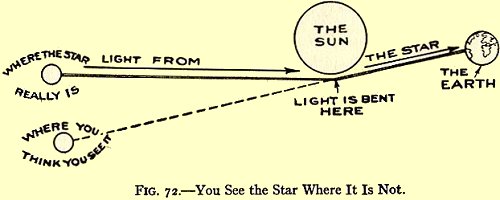
From the 1925 Boy Scientist, an illustration of how gravity bends light, in accordance with Einstein's theory
It is sobering to reflect on the knowledge of our forbears. We knew the diameter of earth within fifteen percent, 2200 years ago. We've known the speed of light for more than three centuries. If this new measurement proves to be valid, we will finally have answered what turns out to be a three-hundred-year-old question about the transmission of gravity.
And so there was life before the computer, before Einstein, and even before electricity. But, as we began looking at the immensities of space and velocity, a new mystery now began forming. Time, which we'd previously so taken for granted, began to reveal a very mysterious side indeed.
Track 7: Time, What an Empty Vapor 'Tis (4:49): Eight years before Newton died, another Isaac, a dissident Protestant named Isaac Watts, published a book of Psalm Paraphrases and Hymns. One of those has the following text, which I find quite haunting:
Time, what an empty vapor 'tis;
and days how swift they are.
Swift as an Indian arrow flies;
or like a shooting star.
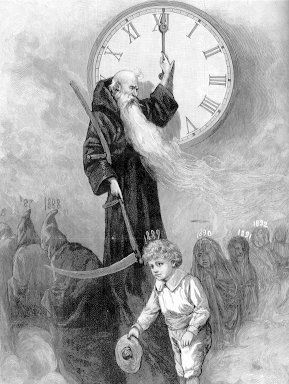 For, all its compelling simplicity, this view of time is too simple. Isaac Watts, like Isaac Newton, sees time as moving inexorably, linearly, forward. Our first real inkling of trouble would not appear until the nineteenth century. And it would appear in the new science of thermodynamics.
For, all its compelling simplicity, this view of time is too simple. Isaac Watts, like Isaac Newton, sees time as moving inexorably, linearly, forward. Our first real inkling of trouble would not appear until the nineteenth century. And it would appear in the new science of thermodynamics.
At the heart of thermodynamics are two ideas -- two laws. The First Law gives students little trouble, the idea that energy is conserved. But the Second Law is a huge obstacle. And I think that might be the result of discontent more than any complexity. For the Second Law says that order becomes disorder. It says that no spontaneous process can ever be completely undone. It tells us that the sun will eventually burn out and all living things will one day die. Mother Goose said it wonderfully well when she told about a broken egg:
Humpty Dumpty sat on a wall.
Humpty Dumpty had a great fall.
All the King's horses and all the King's men,
Couldn't put Humpty together again.
You can see how the Second Law begins directing our attention toward time. It is rooted in the probability of molecular behavior and it says nothing about individual molecules. The individual molecules are not bound by it. It comes about because vast numbers of molecules have to go from less probable arrangements to more probable ones. Our awareness of the world around us does not reach down to the scale of molecules. We're aware only of the behavior of large groups of molecules. The Second Law therefore mirrors human consciousness.
As the Second Law follows probability to greater disorder, it becomes a companion to our subjective perceptions of order and disorder. It's been called time's arrow because we experience events only in one direction -- just as Watt's hymn suggests.
Yet, two things tease at the back of our minds here. One is the fact that the behavior of individual molecules has no such temporal directionality. The other is that the true state of affairs is not quite so dreary as the Second Law first suggests. The less well-known principle of Le Chatelier and Braun limits the Second Law. It says that when natural processes go to greater disorder, they at least summon up resistance to their own completion. The best-known example is chemical reaction:
The hotter a flame becomes, the less complete combustion will be. Instead of racing to completion, burning opposes its own action. Rust likewise tends to cover metals with protective coatings that slow the process of rusting. Spontaneous processes degrade things, but nature always invokes processes that retard degradation. Nature protects us. It slows and inhibits the inevitable. It grants us time. You've probably heard Shakespeare's invocation of the Second Law in his play Cymbeline,
Golden lads and girls all must,
As chimney sweepers come to dust.
We need to remember that our coming to dust is muted by the Le Chatelier-Braun principle. We can grow old gracefully. The Second Law aims time toward disorder and decay, but Le Chatelier and Braun tell us that time's arrow is slowed -- that it is possible to sustain and enjoy a measure of beauty and order along the way.
But, not only is time a gentler taskmaster than it first seems, we also have that unresolved fact that time ceases to have meaning on the molecular level. There is clearly more to this than met either Isaacs' eye. Let us next look more closely at the not-so-iron hand of time.
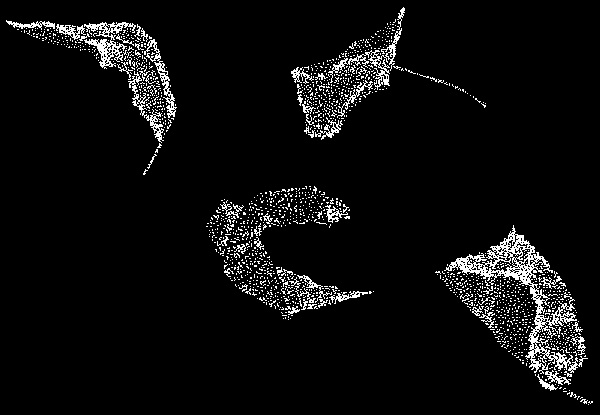
Track 8: Time's Arrow Turns (3:36): On September 5th, 1906, 62-year-old physicist Ludwig Boltzmann slipped a noose around his neck and hanged himself. Boltzmann had done more than anyone to predict the behavior of gases by describing their moving molecules. In the course of his work, he'd struggled incessantly to read the cryptic message about time that is carried in the Second Law of Thermodynamics.
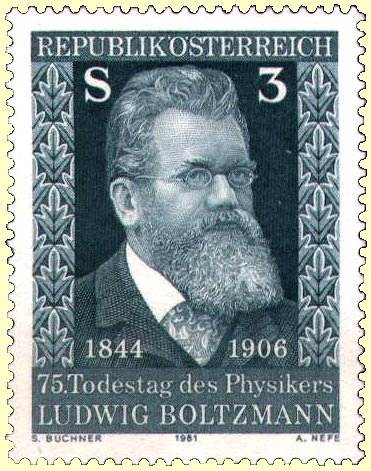 But Boltzmann lived at poor peace with himself. And, in the end, he despaired of being understood. He probably committed the irreversible act of suicide just because scientists were attacking his ideas about irreversibility.
But Boltzmann lived at poor peace with himself. And, in the end, he despaired of being understood. He probably committed the irreversible act of suicide just because scientists were attacking his ideas about irreversibility.
The word irreversibility needs some explaining. You see, when molecules collide, they bounce off one another's force fields with no friction -- no energy loss. If time ran backward, the collision would reverse itself perfectly. But that sets up an absurdity: Suppose you open an air tank and air molecules begin rushing out. Then suppose the motion of each molecule could somehow be magically reversed. Wouldn't history itself run in reverse? Wouldn't the molecules rush back into the tank?
That's as silly as it is logical. Time seems to be directionless on the molecular level, where motion is perfectly reversible. But nothing is so perfect in our larger scale of sensory awareness. Here, in the visible world, the past cannot be undone. Time's arrow flies from past to future. Air never flows back into the tank.
Boltzmann turned superb mathematics on that seeming contradiction. He showed how rules of averaging refused to let such a reversal occur. In any large collection of molecules, disorder continues increasing after you reverse the motions. Almost immediately, the gas would once more begin flowing out.
The trouble is, his math didn't say why reversed molecular motions wouldn't reverse history. Classical physicists, who hadn't accepted his molecular mechanisms, attacked Boltzmann. Soon after he died, quantum mechanics took shape. And then, Heisenberg's Uncertainty Principle said that it isn't possible to specify reversed motions accurately. In a quantum universe, Boltzmann's math still makes perfect sense, and the idea that you can reverse time continues to be nonsensical.
Boltzmann was brilliant, but he had a history of depression and mental illness. Now he couldn't answer his critics, yet he knew he was right. He said,
[theory] fills my thought and action ... no sacrifice for it is too much for me ... [it is] the content of my whole life.
Boltzmann's theory was, as we say, "The hill he chose to die upon." He despaired its lack of acceptance, and he committed his terrible irreversible suicide just as Einstein and the new breed of physicists were taking him very seriously. Had he waited just a little longer, he would have seen his genius triumph. His belief faltered, but he'd put irreversible change in motion. Time's arrow was in full flight and his ideas continued moving outward until, by now, they've touched all of twentieth-century physics.
Track 9: Looking for Right Now (6:51): Boltzmann's efforts to help us understand the meaning of time, and its direction, was the natural conclusion of a six-hundred-year effort to describe the passage of time. Isaac Watts grapples with that part of the problem in the second verse of his hymn,
The present Moments just appear,
Then slide away in haste,
That we can never say, "They're here;"
But only say, "They're past."
We've struggled to locate the ever-elusive present moment by honing, honing, honing the accuracy with which we describe the passage of time. The accuracy of mechanical clocks doubled every thirty years between the invention of the escapement mechanism around AD 1300, and its replacement with electrical clocks around 1920. But no clock will ever be sufficiently accurate to find when right now occurs.
The companion problem is that of establishing simultaneity. When does right now occur in New Delhi or Novgorod? Magellan's globe-girdling voyage brought this question to light in 1522. He'd set out to the west in 1519. His ships crossed the Atlantic, Pacific, and Indian Oceans. They came around Cape Horn, and finally landed in West Africa. There Portuguese locals told the surviving sailors that it was Wednesday. That didn't make sense. They'd kept careful track of the time and they knew it was Thursday.
The date line problem is a drama that would play out many more times, down through the sixteenth century. As settlers moved east and west, they met -- usually in the Pacific -- where they disagreed on the date.
The date-change soon mutated from mystery and surprise into annoyance. By the nineteenth century, settlers who'd gone west carried their time as far as the Philippines. But Guam and New Zealand are far this side of the Philippines. They were settled by Dutch who'd sailed east. So it was Tuesday in the central Pacific while it was still Monday out in the Philippines.
By the nineteenth century, the Pacific people were struggling with American time and Asiatic time. All Europe wanted was to keep the date change out of sight. If the Greenwich Meridian went through London (the center of their universe), the most remote place on Earth was the 180th meridian. That was clearly the place to reset calendars.
But the central Pacific isn't empty. A hundred vested interests sent the line zigging here and zagging there. The king of Samoa, under pressure to adopt "American" time, said, "Look, if we use Asiatic time, then America will get to observe the Fourth of July two days in a row."
Finally, an 1884 conference created the International Date Line. Alaska had been on Asian time when it belonged to Russia. The International Date Line still doglegs awkwardly far to the east to pass through the Bering Straits. That keeps all of Russia on Asian time. Then the line lurches west to keep the Aleutians on American time. When it's Tuesday in Japan and at the tip of Siberia, it's still Monday in western Alaska. The problem is, much of Siberia lies far to the east of Western Alaska.
The line doglegs east a second time to keep Tonga, Fiji, and New Zealand on Asian time. Today, Tonga and Samoa -- next-door neighbors -- have to run on different time. Protestants who kept a strict Sabbath settled both island groups. Both places restricted travel on Sunday, but Sunday occurs twice in a row. The result, at least until recently, was regional travel grinding to a halt two days out of seven.
The question of simultaneity also arises on a much smaller scale. When countries, and even communities, were far more independent of one another, the community could live by the church or town-hall clock. Never mind the town down the road. As our wagons moved west, settlers set their watches after they got to Sleepy Snake, Nevada. But how did their watches compare with those of their neighbors from Broken Axle, Utah, when they met in between?
Of course the watches from Sleepy Snake and Broken Axle simply did not match. Neither, for that matter, did the clocks in Philadelphia match the ones in New Haven. Only when we started building railroads in the 1830s, did something have to be done about simultaneity.

Outside the station, trains ran both ways on a single track. Northbound trains had to know when to expect southbound trains. So the railroads became law unto themselves as far as time was concerned. At first railroad personnel agreed on time as best they could. Then the new telegraph systems changed the game. In 1851, a director of the Harvard Observatory developed a system for telegraphing time to the stations.
This, in turn, raised another question: "Whose time should be given out?" Sailors the world over agreed on Greenwich Meridian time. But, American nationalism didn't permit that on dry land. Instead, the railroads adopted a set of time standards -- each tied to a different city -- and they became the public standard. We eventually reached a kind of time Babel. By 1879, we set our clocks by 75 different railroad standard times. Objective voices in general, and scientists in particular, begged for a uniform national standard.
In 1885, the railroads finally agreed to standardize on common time zones. That March, they all adjusted their clocks a few minutes -- one way or the other -- to fit into one of four zones. But the clocks around them didn't change. The railroads were powerful, and the public deeply distrusted them. We wouldn't buy into the railroad standard until 1918. And, after that, railroad independence remained. From 1920 to 1967, the railroads would not acknowledge daylight saving time.
All the tools for setting up time-standards were in hand by 1850. But, in 1850, Sacramento and Hartford might as well have been on different planets. We didn't feel much need for a standard. After all, individualism is too precious to give up just because technology says it's sensible to do so. We don't accept a standard -- we don't abdicate individualism -- until necessity forces it. And perhaps that's really the way things should be.
Track 10: Pulling the Rug from under Our Feet (6:21): Charles Dickens might well have been talking about the turn of the twentieth century when he began The Tale of Two Cities with his famous trope on contradiction, "It was the best of times, it was the worst of times, ... it was the epoch of belief, it was the epoch of incredulity, .. we had everything before us, we had nothing before us, ...". He ends with a deeply cynical remark about how everyone had failed to see eighteenth-century revolution coming, "... it was clearer than crystal [he wrote] that things in general were settled for ever."
The world was again poised to turn upside down in 1900. That year, historian Henry Adams, great-grandson of one American president and grandson of another, made a prophetic remark about the coming revolution. He was visiting the Paris Exhibition -- the latest in the series of world fairs where the nations put all their new technology and science on view. Adams grew dizzy with the sensory onslaught, and he finally wrote, [I found myself] lying in the Gallery of Machines, my historical neck broken by the sudden irruption of forces totally new.
The irruption of forces that he saw coming turned out to be more radical than even he imagined, so wildly was the world once more shifting under our feet. One year later, the irruption found a very specific focus in the publication of a paper by Max Planck. Planck had finally solved a long-standing problem of physics. He correctly predicted how the energy emitted by a blackbody is distributed among the different wavelengths of light, heat, and other forms of radiation. (A blackbody is an ideal surface that absorbs all light and heat radiation reaching it, reflects nothing, and perfectly emits radiation.)
Planck finally solved the problem by abandoning the common-sense idea that energy is a continuous and infinitely-divisible quantity. We're still sorting out the implications of that notion. After Bohr, the very foundations of a reality that had seemed as plain as the nose on our face began slipping away from us. Planck had begun the process that would turn photons from material elements into what more closely resembled a new essence of the old alchemy. The hard-edged reality of the late nineteenth century is one we still try to claim, but shall never own again. But definiteness, predictability, and certainty have, long since, crumbled under our fingers.
![]()
By 1901, electricity had been the focus of attention for a century and a half. It'd already formed an important role in the Edwardian world. We had telegraphs, electric motors, light bulbs, and telephones. The real fun began as we intensified our attempts to know just what electricity was. Now, we began posing the question in ways that would have to end with the deconstruction of matter, energy, and all that we had ever tried to call real.
In 1905, Einstein would present the first of his papers on relativity. Now time, space, matter, and energy would begin flowing together like spilled paints and they would no more be separated than Humpty Dumpty could be made whole. The spill had also been flowing out through the world of arts and letters, and now its effects would touch much more than just physics. Three events that occurred in 1912 suggest how this worked.
First of all, Niels Bohr showed how he could use Planck's new quantum theory to explain the way electrons orbited atoms. He lent enormous credibility to Planck's ideas. After Bohr, the devastation would start becoming clear.
But 1912 was also the year that Marcel Duchamp painted his famous Nude Descending a Staircase. It is a cinematic series of images of a highly abstracted nude, not as a camera would show her, but broken into cubist fragments. It's as though we registered a naked woman coming down the stairs to join our gathering. Out of our embarrassment, we gaze at her only in a series of blinks, from the corner of one eye. This is no longer an image, but it's an event, smeared in both time and space. And it appeared just as the material photon itself turned into a space-time smear.
1912 was also the year poet Rupert Brooke heard the sighing of that same Zeitgeist in a Berlin cafe. It was May and he was thinking about summer at home in the little town of Grantchester, near Cambridge, England. He wrote,
... would I were
In Grantchester, in Grantchester!
Some, it may be, can get in touch
With Nature there, or Earth, or such.
...
I only know that you may lie
Day long and watch the Cambridge sky,
And, flower-lulled in sleepy grass,
Hear the cool lapse of hours pass,
Until the centuries blend and blur
In Grantchester, in Grantchester.
...
Say, is there Beauty yet to find?
And Certainty? and Quiet kind?
Deep meadows yet, for to forget
The lies, and truths, and pain?� oh! yet
Stands the Church clock at ten to three?
And is there honey still for tea?
So time did blur, and ten-to-three became an instant too precise to specify. Brooke summons up an afternoon so lovely that it might have been painted by the French Impressionists. Yet, by then, the Impressionists had exhausted themselves with the beauty of pastoral summer skies. Art had gone on to abstract modern forms -- joining with Einstein and Planck in blurring time and space.
We continued our dizzying deconstruction of all solidity for the whole of the twentieth century. Today, you and I still cast about -- hoping to find solid footing once again. Let us think next about that problem.
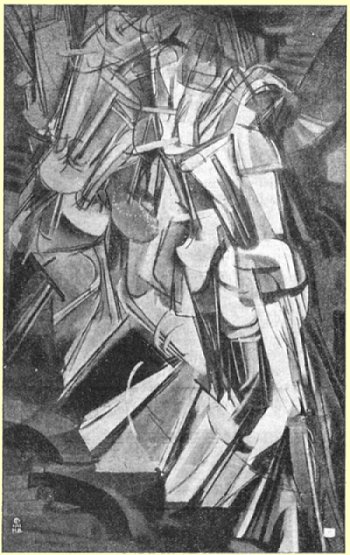
Nude Descending a Staircase (No. 2), by Marcel Duchamp.
(from Century Magazine, April 1914, pg. 822.)
Track 11: Seeking Solid Ground (7:21): As we've struggled to find some bottom line on quantum theory, each explanation of its implications has seemed to take us further and further from every precept of common sense. We try to reject each new violation of human intuition, only to find it relentlessly passing every rational and experimental test.
Now, Oxford physicist David Deutsch has been putting flesh and blood on the wildest idea yet. In 1957, Princeton graduate student Hugh Everett suggested that quantum mechanics makes sense only if there are many parallel universes. Deutsch supports that idea by reminding us of an old experiment in which we shine a beam of light through thin parallel slits onto photographic film. Only every other slit of light appears on the film. If we've arranged things correctly, the alternate projected slits show up only as darkness.
Quantum theorists have tried to explain this by saying that photons interact like waves, and cancel each other. But that calls for a hopeless tangle of underlying assumptions. Deutsch argues that it can work only if invisible shadow photons enter from a parallel universe and obstruct the flow of light.
Bizarre as that may be, other physicists find it increasingly inescapable. Like so many quantum ideas, this seems to flow from logical necessity. It's one thing to speculate about parallel universes. But here we're asked to admit that (on the quantum level) we actually interact with those other worlds.
Think about the implications. Our lives are a sequence of choices: stand up or sit down, turn left or turn right, strike out or forgive. If Deutsch is right, we opt into one universe or another every time we make any free-will choice, no matter how small. (There is, after all, no room for free will in a deterministic universe of pure cause and effect.)
Any free-will decision has to be made below the scale of apparent cause and effect. And that's where we touch those alternate universes. All our other selves are out there living lives better or worse than our own. That wrong turn I took, umpty-ump years ago, simply separated me from another self who took the right turn. He's out there living that other life. Maybe he found fame and riches only to suffer some disaster six months later.
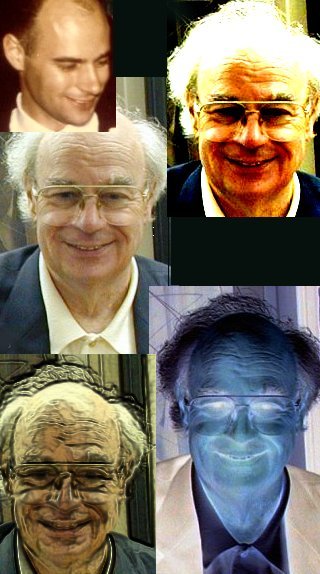
Do you want to reverse time and redo the past? Well, it's already been done. That other you, the one who did it right, is there. And maybe she wishes she'd taken the road you chose. If Deutsch is right, and all possible worlds exist, who's to name any one of them as more real than the others?
Of course, we have to be skeptical; we have to doubt all this. We need to stay in touch with the solid earth while we finish the task of unravelling the mystery. So try another recent point of view. Margaret Wertheim enters this arena through what we might see as a back door. In her book, Pythagoras' Trousers: God, Physics, and the Gender Wars, she asks: Why are math and physics the last fields that've been opening up to women? Her answer takes shape as she looks at the relation between physics and religion, and that answer might be of some help as we try to cope with the yawning pit of modern physics.
Many theoretical physicists are trying to formulate A Theory of Everything -- a theory so broad, so far-reaching that it encompasses the whole of things. Instead of standing over and against religion, as it seemed to do in the nineteenth-century, physics is now moving into the heartland of religion itself.
But physics and religion were never separate pursuits before the seventeenth century. The idea that they need to be kept apart has only been afoot for some four hundred years. Now, once again, physicists are creating a literature couched in bluntly theological language. Nobel Laureate Leon Lederman picks that theme up in his book, The God Particle. Cosmologist Stephen Hawking repeatedly invokes the Mind of God in his physics.
To make sense of that, Wertheim literally begins with Pythagoras' trousers. Pythagoras formed his religious commune in Italy around 600 BC. Contrary to Greek custom, the men grew beards and wore trousers. And it was only those trousered Pythagoreans who accepted women as intellectuals. Greece had generally denied women any place in the life of the mind.
The Pythagoreans looked for God in music, math, and symmetry. Mathematical physics was their religion and they set the pattern for physics for the next 2200 years. But mathematicians and physicists were like any other priests. Outside the Pythagorean community, Greece gave women no part in priesthood.
Plato's admiration for Pythagoras opened one crack in that armor of male dominance. When the Medieval Church formed around Neoplatonism, women finally regained a niche in intellectual life. Only the Catholic priesthood (and physics) remained male. When natural philosophy (physics) split away from theology in the seventeenth century, the maleness of the priesthood stayed in place. And so it has done until very recently.
Now two remarkable changes are occurring: The religious priesthood is opening back up to women for the first time in three thousand years. And physics once more sees itself called upon to address questions that we'd split off and placed in the separate domain of religion.
Where all this will come out is anyone's guess. But Wertheim suggests that Theories of Everything are, by their nature, as arcane as questions about angels dancing on heads of pins. Perhaps the inclusion of women in the priesthood -- of physics or of religion -- is part of the process of bringing it back to the hard earth. Perhaps both fields need to deal with the pastoral matter of our earthly sustenance as well as shaping us spiritually. Wertheim wonders if physics isn't ready to downplay questions about the Mind of God, in favor of questions about our physical nurture.
And so we are faced with a variant on the old Manichean Heresy. Named after third-century Persian philosopher, Mani, it claims that we struggle to overcome the evil darkness of material existence and reach the divine light, which is God. It's called a heresy because the Christian Church rejected the idea that the material world is evil. Obviously, darkness and light, material and spiritual things -- matter and energy as well -- have to coexist. Certainly science needs to keep asking the abstract questions at the same time it struggles to deal with human need. The seemingly divergent views of Deutsch and Wertheim actually fuse into opposing facets of the same gem.
The challenges of time and space become both material and abstract as our species is called to find its way into the reaches of space. And our inquiry stands upon that threshold today. Let us finish our look at time and space in the doorway formed by the fringes of our own atmosphere.
Track 12: Space: The Final Frontier! (7:04): Captains James T. Kirk and Jean Luc Piccard have dangled a very special bait before us, ever since 1966. While they've intoned the words: Space: The Final Frontier, we have struggled to enter that frontier.
Yet our Manichean thinking has left us divided. On Christmas Eve, 1968, astronauts Frank Borman, William Anders, and Jim Lovell rode their orbiter around the far side of moon. They were the first living creatures to gaze on that surface, and, as they came around the moon, they read aloud to us from Genesis. The words, In the beginning God created the heaven and the earth, summoned up the vast expanse of space. In that moment the firmament was no longer an abstraction. Hope was immense.
A few months later, that small footprint in the moon's dust seemed to tell us we'd completed what we'd set out to do. The culmination did not match our dreams. Thoreau had anticipated our reaction when he wrote,
The youth gets together his materials to build a bridge to the moon or perchance a palace or temple on the earth -- & at length, the middle-aged man concludes to build a woodshed with them.
Now, however, we might actually build that figurative bridge. A number of straws in the wind suggest a revitalization of our move into space. The great impediment to space travel has been the huge cost of getting free of Earth�s gravity. Multi-stage rockets are inefficient but, as we develop remarkably light and strong new materials, less-costly, single-stage, recoverable rockets seem to be within grasp.
Far more remarkable technologies for leaving the clutches of gravity have been suggested as well. In 1979, Arthur C. Clarke wrote a science-fiction book, The Fountains of Paradise. A few months later, he included a letter absolving Charles Sheffield of plagiarism at the end of Sheffield's science-fiction novel, The Web Between the Worlds. Sheffield, you see, had cooked up the same mad premise that Clarke had.
Both authors proposed to replace rocket launches with an elevator, anchored at the equator and reaching up beyond the level of geosynchronous orbit. That�s where an orbiting vehicle rides directly over one point on Earth. Clarke congratulates Sheffield for arriving at the idea independently.
If the idea sounds crazy, bear in mind that both Clarke and Sheffield were distinguished scientists before they turned to science fiction. Clarke was a noted astronomer. Sheffield was the chief scientist of the Earth Satellite Corporation. Both used science fiction to promote space travel.
Their elevator was to be a cable with an extremely high tensile strength -- strong enough to support its length of over twenty two thousand miles. It was to be a single perfect crystalline carbon or silicon fiber. Today we�re closing in on carbon nanotube materials that should be even stronger; and we routinely put geosynchronous satellites into orbit.
Above the geosynchronous level, a satellite will fly away from earth; and below, it will fall back down. So the cable above pulls on the cable below, holding it in place. The cable would be tapered -- thickest at the point of geosynchronous orbit, where the stresses would be greatest.
I won't describe all the technology that Clarke and Sheffield suggest to make such a thing work, or how they plan to put it in place, anchor it, and counterweight it above the geosynchronous level, or how they propose to pass the energy of rising and falling cars back and forth. But their proposals are very similar because they obey the same laws of physics. In fact, Russian engineers and others had already suggested the idea. The Russians called it a Cosmic Funicular. NASA calls it a Space Elevator.
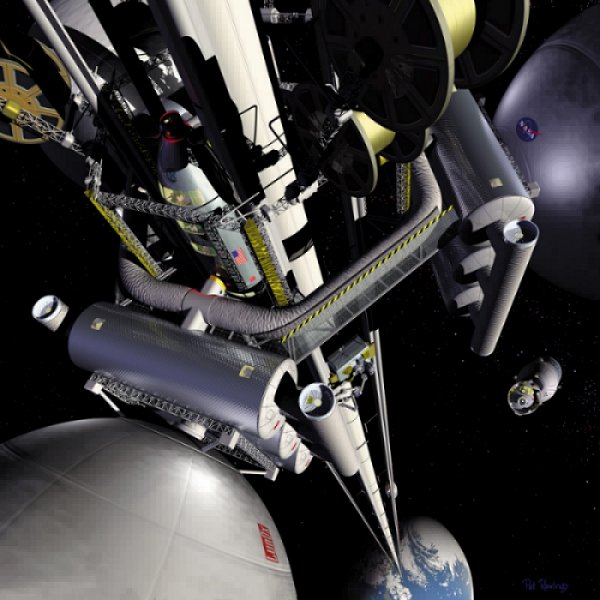
Conceptual drawing of a space elevator, courtesy of NASA Marshall Space Center
You might incline to laugh this off as too grand to take seriously. However, in 2002, NASA sponsored a conference for exploring design issues involved in building a space elevator. And the echoes of the Thoreau quotation about building a bridge to the moon are suddenly too strong to ignore.
Many such ideas have lain dormant for years and are only now resurfacing -- photon propulsion, extended human dormancy during long space journeys, and so forth. However, what's really been dormant for so long are not scattered elements of a space program, but the determined desire to get ourselves out there.
We shall regain that desire, and we shall set off on a far grander scale than anything we've seriously contemplated. When we do, perhaps we can quit miring ourselves into the morass of self-consuming troubles that've created such disillusion here on Earth.
The other emergence that promises, once again, to kick-start human energy, is the emergence of radical new physics. Henry Adams heralded the immense human energy of the twentieth century when he told us we were facing the irruption of forces totally new. He also told us that we were about to rediscover mystery. And we did so in the reason-defying logic of quantum mechanics and relativity theory.
Now a new yawning pit of implausibility opens up before us. Every day we read some new article about super-string theory, loop theory, dark matter, alternate universes, quantum computation, the cosmic anthropic principle, new implications of chaos theory upon our perception of reality, and simultaneous communication between particles -- all being backed up with new evidence.
We stand again on the threshold of mystery, just as we did in 1900. Once more, our world is about to become unrecognizably larger than it was. Once more, hope wells up from a great ocean of untapped but inchoate possibility. Something is about to happen.
Time and space are once more ready to turn and change, and to take us up to new mysteries and new heights -- if only we let them do so. It is, truly, an extraordinary time to be alive.
I'm John Lienhard, at the University of Houston, where we are interested in the way inventive minds work.
Track 13: Data This is where the data are stored for the CD-ROM. Please ignore it here as well as on your audio CD player.
Time: 64 minutes and 41 seconds
A FEW SOURCES
Track 2:
Duncan, D. E., Luna: Temptress of Time. Calendar: Humanity's Epic Struggle to Determine a True and Accurate Year, New York: Avon Books Inc., 1998, Chapter 2.
Track 3:
Wilford, J. N., The Mapmakers. New York: Random House, Vintage Books, 1982, Chapter 2.
Boorstin, D. J., The Discoverers: A History of Man's Search to Know His World and Himself. New York: Random House, 1983, Book Two: The Earth and the Seas, Part IV, The Geography of the Imagination.
Track 4:
Edgerton, S. Y., Jr., Galileo, Florentine 'Disegno,' and the 'Strange Spottednesse' of the Moon. Art Journal, Vol. 44, No. 1, 1984, pp. 225-232.
Ashworth, W. B. Jr., The Face of the Moon: Galileo to Apollo: an Exhibition of Rare Books and Maps, October 13, 1989 -- February 28, 1990, Kansas City, MO: Linda Hall Library, 1989.
Wilford, op. cit., Chapter 23.
Track 5:
Wilkins, J., The Discovery of a World in the Moone. Or, A Discourse Tending To Prove that 'tis probable there may be another habitable World in the Planet. London, Printed by E.G. for Michael Sparl and Edward Forrest, 1638. (Actually, Wilkins' name did not appear on the first edition's title page. My source was a facsimile edition published by Da Capo Press, Inc., in 1972.)
Von Braun, W., and Ordway, F. I., III, History of Rocketry & Space Travel. (revised ed.) New York: Thomas Y. Cromwell Co., 1969.
For a translation of Cyrano's science fiction and some bibliographic history of it, see: Cyrano de Bergerac, Voyages to the Moon and the Sun. (tr. Richard Aldington) New York: The Orion Press, 1962.
And to read a translation of some of Cyrano's book about visiting the moon, The Other World or the States and Empires of the Moon, see: http://www.bewilderingstories.com/special/index.html
Track 6:
Tyndall, J., Light and Electricity: Notes of Two Courses of Lectures Before the Royal Institution of Great Britain. New York: D. Appleton and Co., 1883, pp. 19-20.
Routledge, R., Discoveries and Inventions of the Nineteenth Century. ca. 1890. (Reprinted by Bracken Books, New York, 1989.) pp. 298-301.
Roberts, R. M., Serendipity: Accidental Discoveries in Science. New York: John Wiley & Sons, Inc., 1989, Chapter 4.
At this writing, the web is full of reports on the speed of gravity. See, e.g.: http://www.msnbc.com/news/856046.asp?cp1=1
The speed of light is now given as 299,792.458 kilometers per second.
Track 7:
Watts, I. The Psalms of David: Imitated in the Language of the New Testament and Applied to the Christian State and Worship. London: J. Clark, 1719, Hymn 58.
In this, and other tracks of this CD, we have used Andrew Lienhard's paraphrase of William Billings setting of Watts' hymn, Dorchester, to underlay the text.
The Second Law of Thermodynamics is detailed in any undergraduate thermodynamics text. I especially recommend Reynolds, W. C., and Perkins, H. C., Engineering Thermodynamics. Garden City, NJ: Doubleday and Co., Inc., 1966, Chapter 11.
My favorite sources for the principle of Le Chatelier and Braun are: Epstein, P. S., Textbook of Thermodynamics. New York: John Wiley & Sons, Inc., 1937, Chapter 21. Or, Callen, H. G., Thermodynamics and an Introduction to Thermostatistics. New York: John Wiley & Sons, 1985, Sections 8.4 and 8.5.
The original formulation of the Second Law of Thermodynamics was made by Sadi Carnot. See: Carnot, S., Reflections on the Motive Power of Heat. (tr. R. Thurston) New York: ASME, 1943.
Track 8:
For Boltzmann’s story, see P. Coveney and R. Highfield, The Arrow of Time: A Voyage Through Science to Solve Time's Greatest Mystery, New York: Fawcett Columbine, 1990. Boltzmann’s H-theorem is discussed by C. L. Tien and J. H. Lienhard, op. cit. (see especially Section 12.3).
Track 9:
Winchester, S., Where Time Begins. Cond� Nast Traveler, January 1990, pp. 100-102 and 145-146.
Stephens, C., 'The Most Reliable Time': William Bond, the New England Railroads,and Time Awareness in 19th-Century America. Technology and Culture, Vol. 30, No. 1, 1989, pp. 1-24.
Bartky, I.R., The Adoption of Standard Time. Technology and Culture, Vol. 30, No. 1, 1989, pp. 25-56.
Track 10:
Adams, N., The Education of Henry Adams, New York: The Heritage Press, 1918. See especially Chapter 25.
The paper in which Planck completed his quantum prediction of the spectral emissive power of a radiating black body was: M. Planck, “Entropie und Temperatur strahlender Wärme” (Ann. Phys. (4) 4, 553, 1901). (Actually, Planck wrote two important preliminary papers in 1900.) For a simple description of the prediction see: C. L. Tien and J. H. Lienhard, op. cit..
For more on Duchamp, see: http://www.understandingduchamp.com/text.html
For the full text of Rupert Brooke's poem, The Old Vicarage, Grantchester, see: http://www.geocities.com/Athens/Delphi/7086/brooke7.htm
For elementary discussions of the Bohr Atom, see:
http://www.colorado.edu/physics/2000/quantumzone/bohr.html
http://zebu.uoregon.edu/~js/glossary/bohr_atom.html
Track 11:
Deutsch, D., The Fabric of Reality. New York: Penguin, 1998. (I am grateful to John Proffitt, General Manager of KUHF Radio, for providing me with an advance proof copy of Deutsch's intriguing book.)
Folger, T., Quantum Shmantum. Discover, pp. 36-43, Sept. 2001.
This is Deutsch's home page: http://www.geocities.com/iona_m/Cosmology/DeutschPhysics.html
Wertheim, M., Pythagoras' Trousers: God, Physics, and the Gender Wars. New York: Random House, 1995.
Track 12:
A. C. Clark, The Fountains of Paradise. New York: Harcourt, Brace, Jovanovich, 1979.
C. Sheffield, The Web Between the Worlds. New York: Ballantine Books, 1979.
The following website offers current NASA thinking about the Space Elevator concept and provides links to other discussions of the idea: http://flightprojects.msfc.nasa.gov/fd02_elev.html
The Thoreau quotation may be found in: H. D. Thoreau, Journal: Vol. 5: 1852-1853. (eds. Patrick F. O'Connell and Robert Sattelmeyer) Princeton, NJ: Princeton University Press, 1997. See the entry for July 16, 1852.